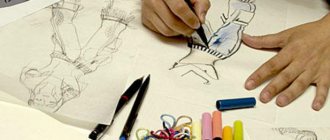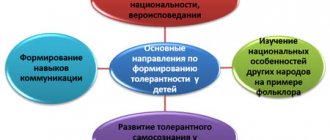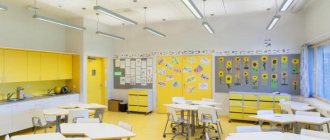Using project-based learning technology in elementary school lessons
Bibliographic description:
Sozonova, S. D. Using project-based learning technology in elementary school lessons / S. D. Sozonova. — Text: immediate // Theory and practice of education in the modern world: materials of the X International. scientific conf. (Chita, April 2020). — Chita: Young Scientist Publishing House, 2020. — pp. 95-98. — URL: https://moluch.ru/conf/ped/archive/277/14073/ (date of access: 10.10.2020).
The article presents the experience of a primary school teacher in introducing project-based learning technology (project method) in lessons in primary school, and also notes the effectiveness of introducing project-based technology into the educational process of primary school.
Key words: project-based learning technology, project method, project technology, primary school, work on the project topic, effectiveness of project-based learning technology.
Project-based learning technology is a technology that is currently being actively introduced into the educational process of primary schools. This technology in the pedagogical literature is also called the “project method”, “project technology”.
Project technology is primarily a student-oriented technology, with the student at the center. The basis of technology is the activity of the student himself, aimed at developing educational, cognitive, and creative abilities. The teacher acts as an organizer-mentor, organizer-consultant for students.
The technology of project-based learning allows the teacher to organize independent work of students on a specific topic or problem, and gives students the opportunity to develop their creative abilities both in individual academic subjects and in extracurricular activities. While working on a project, students develop qualities such as curiosity, that is, they develop a sincere interest in the topic being studied, independence, that is, the desire to “get to the truth” themselves, learn the unknown, and also develop a sense of responsibility for the work they have started to themselves and to their classmates , in front of the teacher.
E. S. Polat makes the following requirements for the use of project-based learning technology:
1) the basis of any project should be a significant, interesting or little-studied problem;
2) there must be theoretical, practical, cognitive significance of the results of work on the project topic;
3) dominance of independent (individual or pair, or group) activities of students;
4) the mandatory presence of a well-thought-out work structure;
5) the use of research methods that initially involve a sequence of stages of action.
The variety of forms of project activity has given rise to a number of classifications of project technology in pedagogical science: by type of predominant activity, by subject-content area, by duration (by time of implementation), by the number of participants taking part in the project, by presentation form (final presentation of the project) .
1. Based on the type of predominant (dominant) activity, projects can be divided into:
- informational;
- creative;
- practice-oriented;
- research.
Information projects are aimed at students searching for information on any topic and at the student’s further work with the information found.
Creative projects are focused on achieving a set goal and obtaining the planned result. All work on the project is structured and subordinated to the intended result (release of a wall newspaper, recording a video, holding an action, etc.).
Practice-oriented projects are also focused on the final, but only practical, result of students’ activities.
Research projects are distinguished from other projects by the presence of well-thought-out main stages of future research, which are initially aimed at achieving the set goal.
2. According to the subject area, projects are divided into supra-subject, inter-subject and mono-subject.
Over-subject - non-subject projects carried out at the intersection of different areas of knowledge. These projects go beyond school subjects.
Interdisciplinary - projects implemented through interaction at the intersection of two or more subject areas of science.
Single-subject - projects implemented within one academic subject or scientific field (for example, mathematics, literature, Russian language or the surrounding world).
3. In terms of duration (time of implementation), projects can be short-term or long-term.
Short-term - projects implemented in a short period of time (a lesson, two lessons, a week, two weeks).
Long-term - projects that take one month or more to implement.
4. Based on the number of participants taking part in the implementation of the project, there are: individual projects (carried out by one student), group projects (carried out by a group of students), collective (carried out by the class team, the whole school team).
5. According to the form of presentation (the final presentation of the project), projects such as: postcard, newspaper, book, dictionary, video, clip, etc. are distinguished.
In elementary school, the teacher, at his discretion, can give children the task of preparing both individual and group projects, both single-subject and interdisciplinary, both short-term and long-term, depending on the scale of the project topic, the age of the students and their interest in the project topic.
The topic of project work for elementary school students should be determined, from our point of view, by the content of the school subject course. When choosing a project topic, the personal motivation of the student is important, as well as the social significance of the research problem, which is primarily significant for the student himself.
Next, I would like to share the accumulated experience of implementing project technology in the educational process of elementary school.
I begin to introduce elements of design technology into the educational process from the middle (second half of the year) of 1st grade. In the second grade, I confidently give homework to students - to prepare a project on any topic. Most often, I give the kids an assignment to take home during their environment lessons - to prepare a project. The topics of this subject allow students to organize project activities. For example, in the lessons of the surrounding world in the first quarter of the second grade, we study the topic “My family. Family composition." Two weeks before the lesson, students are tasked with preparing a project on the topic: “My Family Tree.” All students are placed on equal terms. Each student must prepare a project, but what it will be will depend on the student himself and his parents (without the help of parents in the second grade, students cannot yet complete a research project), on the creative abilities of the child and his parents, and on the degree of interest.
For two weeks, students work together with their parents on the topic of the project, collect information about the history of the origin of the surname, family, collect and study information about close and distant relatives. After collecting and processing information, students draw up their projects (prepare a presentation, design a wall newspaper, draw a family tree, make a family tree from salt dough, draw a pedigree of their family, etc.). Students must defend their completed projects in front of their classmates.
Before the start of the lesson, children hang their completed projects in the classroom on the board or display them in the classroom at the blackboard, or download prepared presentations onto the teacher’s computer. During the lesson, students who have prepared projects defend their work. The guys talk about their family members, who is related to whom and who, what they did, where, who worked and who, etc. The guys in the class listen carefully to the speakers, and then ask them questions on the topic, ask about what The speaker learned something new about his family members and from whom.
Rice. 1. Nikitin family tree
In Russian language lessons, when organizing work with vocabulary words, my students now simply cannot do without such a homework assignment as preparing a project on the topic “Vocabulary words in my life” or “Vocabulary words in literature” or “Vocabulary words and rules of good manners”, or “Vocabulary words in mathematics”, etc. Children are happy to take on the preparation and completion of such homework, write down vocabulary words whose spelling they need to remember, go to the library or turn to Internet resources to find out the etymology vocabulary words, meaning, scope of use, and then begin to create their projects. Their parents help the children in some ways. And there are also children who, already in the third grade, are able to independently think through the structure of work on a project and independently create a project on a given topic.
Rice. 2. Vocabulary words in my life
Work on the project develops, captivates, organizes the activities of students, and allows the teacher to organize not only the study of vocabulary words, but also the search and reading of additional scientific literature, replenishment and expansion of the students' vocabulary. While reading additional literature, the children come across new and incomprehensible words, find their meaning in the dictionary and take note. Students also manage to include their parents in the work on the project. They not only advise and help their children, but sometimes they themselves take an active part in designing projects and creating presentations. This is another positive aspect of project technology - spending time together, organizing interaction between children and their parents, developing in students such qualities as the ability to express their opinions, discuss, prove their point of view, as well as the ability to listen to another person.
Project technology is the learning technology of the future. It can be actively implemented both in class and in extracurricular activities of students. This technology allows each student to independently gain experience in research and practical activities, broaden their horizons and expand their active and passive vocabulary. Project-based learning technology also develops in students various practical skills that they need so much in later life, such as searching for and working with information, and the ability not only to express their point of view, but also to argue for their answer.
Literature:
- Matyash N.V. Project activities for junior schoolchildren: A book for primary school teachers /N. V. Matyash, V. D. Simonenko. - M.: Ventana-Graf, 2007. - 112 p.
- Project method. Polat E. S., IOSO RAO URL: https: //docs.google.com/document/d/13xOCJ50yaEkIzYq2kuRf3nbzVDewud6fcIkMzFqyrq4/edit?pli=1#
- Pakhomova N. Yu. Method of educational projects in an educational institution: A manual for teachers and students of pedagogical universities. - M.: ARKTI, 2003. - 112 p.
- Selevko G.K. Pedagogical technologies based on activation, intensification and effective management of educational programs. - M.: Research Institute of School Technologies, 2005. - 288 p.
- Sergeev I. S. How to organize project activities for students: A practical guide for employees of educational institutions. - M.: Arkti, 2014. - 80 p.
Key terms
(automatically generated)
: project, project technology, primary school, project-based learning, student, word, class, world around, lesson, educational process.
How to choose a topic for a school project
Depending on the specific situation, the topics of educational projects will be different. In some situations, the topic is taken into account the requirements of the school curriculum. For example, in technology classes, sewing or knitting projects are required. And since some of the projects are proposed by the teacher to deepen knowledge in the subject, their direction is chosen by the teacher himself. The ideal situation would be when the student himself chooses the topic of the project, taking into account his interests: applied, creative and educational.
Mostly, the projects raise issues that are relevant to a specific region. For example, issues related to environmental pollution, household waste disposal, or road development can be considered by high school students. Such projects combine several areas at once: ecology, chemistry, physics, geography and biology. And for younger students, topics related to the characteristics of fairy-tale characters are suitable.
The results of completed projects must be material and properly documented. Albums, almanacs, videos and newspapers can serve as confirmation of the results of the work. When solving a project problem, children draw on skills and abilities from a variety of sciences: physics, chemistry, geography.
Primary school students can be offered a project related to growing onions on the windowsill. For high school students, research related to the study of consumer demand, sociological research, and surveys is suitable.
The importance of design technology
The activity of mental activity, critical thinking, the desire to seek and find new knowledge and skills are the most important qualities of a modern person. The pedagogical technology of project-based learning is aimed at developing all these qualities in schoolchildren.
Teachers are convinced that the time has come to change the didactic paradigm, focused on the reproductive option (classical view), to individual learning. To solve such a problem, new forms and methods are needed, as well as the introduction of the latest technologies into educational institutions.
Methods of project-based learning technology focus on individual independent work and the development of communication skills.
Goals in project-based learning
The following goals are used for modern educational systems:
- Cognitive. They involve studying the surrounding reality, solving issues related to natural objects. The implementation of such goals develops in schoolchildren the skills of working with sources of information and laboratory equipment.
- Organizational and active. They consist of developing skills for independent work planning. Schoolchildren learn to set their own goals when working on a project, master scientific discussion skills, and develop communication skills.
- Creative goals are related to creative activities: modeling, construction and design.





